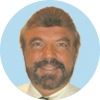Acupuncture has shown an incalculable number of developments, styles, and approaches. There are estimated to be in excess of 300 styles of acupuncture practiced around the world today. Today, the acupuncture profession in America and Europe is being directly challenged by the scientific community and a therapy known as "dry needling," which is practiced by medical physicians, physical therapists, nurse practitioners, physicians' assistants and others.
This procedure is a common style of acupuncture using a combination of ah shi points and specific key acupuncture points, all of which are described and referred to by a key point on a specific nerve that has control over a particular body part. They are not referred to by the typical acupuncture meridian numbering system but by the nerve itself, in addition to a new reference system unique to this practice. For example, the point known as "H9 Lateral Antebrachial Cutaneous" is the same identical point an acupuncture practitioner would know as Qu Chi or LI 11.
From a medical perspective, acupuncture as it has been classically and generally applied, is now being re-examined and re-developed. I first heard of "scientific and neurological acupuncture" in the early 1970s after George Ulett, MD, PhD, received a National Institutes of Health research grant in 1972 (the first) to design a study to compare acupuncture and hypnosis. The conclusions were that acupuncture was not hypnosis but works through some neurophysiological mechanism.
Dr. Ulett specifically states: "This method [dry needling] stimulates motor points and nerve junctures. Specific electrical currents induce the gene expression of neurochemicals and activate brain areas important for healing. This is a scientifically based alternative to the metaphysical theories ... of traditional Chinese acupuncture."
Dry needling, or neurological acupuncture, utilizes just 24 specific points, along with points through the sympathetic trunk ganglia chain, which are made up of nerve fibers from the posterior primary rami of the spinal nerves. Acupuncture practitioners are familiar with these as the Hua Tuo Jia Ji points. The procedure also uses as previously mentioned, the ah shi points within the area of involvement. These are referred to as "symptomatic points." As this procedure becomes more popular and patients will approach you for your opinion, it is imperative you be aware of these 24 points, their names and corresponding acupoint name.
These points are referred to as the name of the nerve or by the "H" designation, which stands for "homeostatic." The actual numerical point name used by acupuncture practitioners are not used.
The shoulder comprises four points: Spinal Accessory H3, GB21 Jian Jing; Suprascapular H18, SI11 Tian Zong; Dorsal Scapular H13, SI14 Jian Wai Shu; Lateral Pectoral H17, ST15 Wu Yi.
The upper limb comprises three points: Deep Radial H1, LI 10 Shou San Li; Lateral Ante Brachial H9, LI11 Qu Chi; Superficial Radial H12, LI 4 He Gu.
The back comprises five points: Superior Cluneal H14, Miracle point (Yao Yi) Top of the iliac crest; Posterior Cutaneous (L2) H15, BL23 Shen Shu; Spinal nerve of T7 H20, DU9 Zhi Yang; Posterior Cutaneous of T6 H21, BL16 Du Shu; Posterior Cutaneous of L5 H22, BL26 Guan Yuan Shu.
The lower limb comprises eight points: Saphenous H4, LIV (LR) 8 Qu Quan; Deep Peroneal H5, LIV (LR) 3 Tai Chong; Tibial H6, SP6 San Yin Jiao; Sural H10, BL57 Cheng Shan; Lateral Popliteal H11, BL39 Wei Yang; Inferior Gluteal H16, GB30 Huan Tiao; Iliotibial H18, GB31 Feng Shi; Common Peroneal H24, GB34 Yang Ling Quan.
The head and neck comprise four points: Great Auricular H2, SJ (TE) 17 Yi Feng; Greater Occipital H7, BL10 Tian Zhu; Infraorbital H19, ST2 Si Bai; Supraorbital H23, BL2 Zan Shu.
No practitioner will argue the merits of the above list of 24 points as being extremely significant. Now that it is associated with modern medical neurological explanations it is has become a medically acceptable practice. Dry needling is a procedure which is now established within the country and is growing in popularity amongst medical practitioners daily. I do not believe this procedure will threaten the integrity of those practicing acupuncture. However, acupuncture may be forced to re-examine its historical roots for no other reason than survival in a contemporary, medically aware society. Even though Damp Heat and Wind Cold will always be a viable factor for the traditional acupuncture provider, modern neurology is certainly altering the way many will perform acupuncture in the future.
If you would like an illustrated graphic of the points discussed in this article, please send your request to .
Click here for previous articles by John Amaro, LAc, DC, Dipl. Ac.(NCCAOM), Dipl.Med.Ac.(IAMA).




